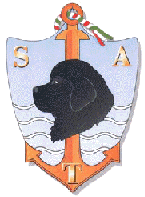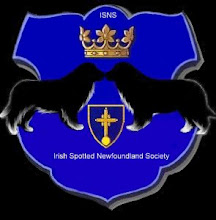
Monday, February 26, 2018
Friday, February 9, 2018
Lost Irish Spotted Newfoundland
From the Times Digital Archives (Gale Databases)
To investigate the historical variation of Newfoundland dog fur colour, the ‘Times Digital Archive’ (Gale Databases) database of the advertisements for lost or stolen dogs in the Times newspaper was used. For these advertisements to be useful, they needed to contain a good description of the animal in question, thus helping to eliminate the potential bias due to carelessness or journalistic license. Many of the descriptions of the dogs are sufficiently detailed, such as this one from 1785:
“LOST on Saturday last, May 28th, a large Black Newfoundland Dog, has White Feet, a little White in the Forehead, the end of his Tail White, answers to the Name of Lyon”.

To investigate the historical variation of Newfoundland dog fur colour, the ‘Times Digital Archive’ (Gale Databases) database of the advertisements for lost or stolen dogs in the Times newspaper was used. For these advertisements to be useful, they needed to contain a good description of the animal in question, thus helping to eliminate the potential bias due to carelessness or journalistic license. Many of the descriptions of the dogs are sufficiently detailed, such as this one from 1785:
“LOST on Saturday last, May 28th, a large Black Newfoundland Dog, has White Feet, a little White in the Forehead, the end of his Tail White, answers to the Name of Lyon”.

Wednesday, February 7, 2018
Friday, February 2, 2018
Historical Analysis of Newfoundland Dog Fur Colour Genetics
ABSTRACT
Open Vet J. 2015; 5(1): 85–89.
Published online 2015 Jun 29.
(J. Bondeson)
"This article makes use of digitized historic newspapers to analyze Newfoundland dog fur colour genetics, and fur colour variations over time. The results indicate that contrary to the accepted view, the ‘Solid’ gene was introduced into the British population of Newfoundland dogs in the 1840s. Prior to that time, the dogs were white and black (Landseer) or white and brown, and thus spotted/spotted homozygotes. Due to ‘Solid’ being dominant over ‘spotted’, and selective breeding, today the majority of Newfoundland dogs are solid black. Whereas small white marks on the chest and/or paw appears to be a random event, the historical data supports the existence of an ‘Irish spotted’ fur colour pattern, with white head blaze, breast, paws and tail tip, in spotted/spotted homozygotes."

Open Vet J. 2015; 5(1): 85–89.
Published online 2015 Jun 29.
(J. Bondeson)
"This article makes use of digitized historic newspapers to analyze Newfoundland dog fur colour genetics, and fur colour variations over time. The results indicate that contrary to the accepted view, the ‘Solid’ gene was introduced into the British population of Newfoundland dogs in the 1840s. Prior to that time, the dogs were white and black (Landseer) or white and brown, and thus spotted/spotted homozygotes. Due to ‘Solid’ being dominant over ‘spotted’, and selective breeding, today the majority of Newfoundland dogs are solid black. Whereas small white marks on the chest and/or paw appears to be a random event, the historical data supports the existence of an ‘Irish spotted’ fur colour pattern, with white head blaze, breast, paws and tail tip, in spotted/spotted homozygotes."

Subscribe to:
Posts (Atom)



































